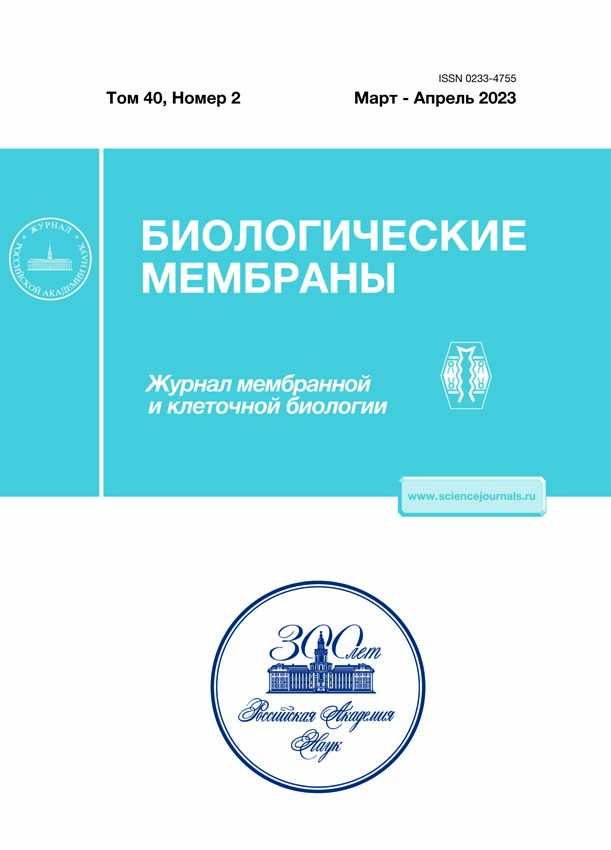Monoclonal Line of Cells Co-Expressing Genetically Encoded Sensors of cAMP and Ca2+
- Authors: Kotova P.D.1, Rogachevskaja O.A.1, Kolesnikov S.S.1
-
Affiliations:
- Institute of Cell Biophysics, Russian Academy of Sciences, FRC PSCBR RAS
- Issue: Vol 40, No 2 (2023)
- Pages: 142-146
- Section: КРАТКИЕ СООБЩЕНИЯ
- URL: https://journals.rcsi.science/0233-4755/article/view/135025
- DOI: https://doi.org/10.31857/S0233475523010048
- EDN: https://elibrary.ru/CNTGDU
- ID: 135025
Cite item
Abstract
A variety of surface receptors and intracellular signaling systems are involved in cell-to-cell communication and paracrine/autocrine regulation of cellular functions. Being most numerous, the family of G-protein coupled receptors (GPCRs) is involved in the regulation of almost all physiological processes due to coupling to multiple and diverse intracellular signaling cascades. Among them, the ubiquitous players are the adenylate cyclase cascade, which controls the intracellular cAMP level, and the phosphoinositide cascade, which determines many aspects of intracellular Ca2+ signaling. Certain facts suggest that the adenylate cyclase and phosphoinositide cascades can be cross regulated. It therefore can be expected that agonists of adenylate cyclase-coupled GPCR receptors also might affect intracellular Ca2+, and in turn, Ca2+-mobilizing ligands might initiate a change in the cAMP level. Thus, simultaneous monitoring of cAMP and Ca2+ in the cell cytosol appears to be rational, as it can significantly refine the understanding of signaling processes initiated by agonists. The on-line monitoring of intracellular cAMP is currently possible only with the use of genetically encoded sensors; such sensors have also been developed for the analysis of intracellular Ca2+ signals. Here we generated a monoclonal line HEK-293 co-expressing molecular fluorescent sensors for cAMP (Pink Flamindo) and Ca2+ (GEM-GECO1). Physiological tests showed that this cell line provides the possibility of simultaneous monitoring of cAMP and Ca2+ with sufficient sensitivity. Such a tool can increase the efficacy of studying agonist-induced intracellular processes and, in particular, the analysis of crosstalk between the cAMP and Ca2+ signaling systems.
About the authors
P. D. Kotova
Institute of Cell Biophysics, Russian Academy of Sciences, FRC PSCBR RAS
Author for correspondence.
Email: p.d.kotova@gmail.com
Russia, 142290, Moscow oblast, Pushchino
O. A. Rogachevskaja
Institute of Cell Biophysics, Russian Academy of Sciences, FRC PSCBR RAS
Email: p.d.kotova@gmail.com
Russia, 142290, Moscow oblast, Pushchino
S. S. Kolesnikov
Institute of Cell Biophysics, Russian Academy of Sciences, FRC PSCBR RAS
Email: p.d.kotova@gmail.com
Russia, 142290, Moscow oblast, Pushchino
References
- Arige V., Yule D.I. 2022. Spatial and temporal crosstalk between the cAMP and Ca2+ signaling systems. Biochim. Biophys. Acta, Mol. Cell Res. 1869 (9), 119293.
- Hofer A.M. 2012. Interactions between calcium and cAMP signaling. Curr. Med. Chem. 19 (34), 5768–5773.
- Massengill C.I., Day-Cooney J., Mao T., Zhong H. 2021. Genetically encoded sensors towards imaging cAMP and PKA activity in vivo. J. Neurosci. Methods. 362, 109298.
- Harada K., Ito M., Wang X., Tanaka M., Wongso D., Konno A., Hirai H., Hirase H., Tsuboi T., Kitaguchi T. 2017. Red fluorescent protein-based cAMP indicator applicable to optogenetics and in vivo imaging. Sci. Rep. 7 (1), 7351.
- Zhao Y., Araki S., Wu J., Teramoto T., Chang Y.F., Nakano M., Abdelfattah A.S., Fujiwara M., Ishihara T., Nagai T., Campbell R.E. 2011. An expanded palette of genetically encoded Ca2+ indicators. Science. 333 (6051), 1888–1891.
- Atwood B.K., Lopez J., Wager-Miller J., Mackie K., Straiker A. 2011. Expression of G protein-coupled receptors and related proteins in HEK293, AtT20, BV2, and N18 cell lines as revealed by microarray analysis. BMC Genomics. 12, 14.
- Zink-Lorenz A., Komitowska J., Raue F. 1996. Norepinephrine induced calcitonin secretion in rat medullary thyroid carcinoma 6-23 cells: Interaction between intracellular calcium and cAMP. Exp. Clin. Endocrinol. Diabetes. 104 (1), 43–49.
Supplementary files









